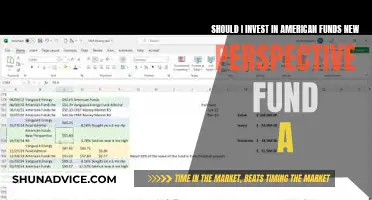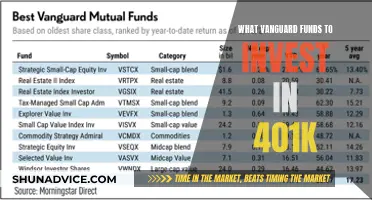
When investing in mutual funds or exchange-traded funds (ETFs), one of the key costs to consider is the MER, or Management Expense Ratio. The MER is an annual fee that covers the total cost of managing and operating a fund, including management fees, administrative costs, and taxes. It is expressed as a percentage of the fund's assets, typically ranging from under 1% to over 3%. While investors do not pay the MER directly, it reduces their return on investment. Understanding the MER is crucial for investors as it helps them make informed decisions about where to invest and can significantly impact long-term investment growth.
| Characteristics | Values |
|---|---|
| What does MER stand for? | Management Expense Ratio |
| What does MER include? | Management fee, operating expenses, taxes, legal and audit fees, marketing costs, and more |
| How is MER calculated? | Expressed as a percentage of the fund's assets or average dollar amount of a mutual fund investment |
| Who pays the MER? | The fund itself, not the investors |
| How does MER affect investors? | Reduces their return on investment |
| How often is MER charged? | Yearly |
| What is a good MER? | For an exchange-traded fund (ETF), a good MER is usually around 0.25% to 0.75%. A MER above 1.5% is considered high. |
What You'll Learn

MER is short for Management Expense Ratio
Investors do not pay the MER directly; it is paid by the fund itself. However, the MER reduces the investor's return on investment. The published rates of return for mutual funds and ETFs are the rates after their MERs have been deducted. For example, if a fund's return before fees was 8% and the MER was 1.5%, the reported investment performance would be 6.5%.
MERs vary from fund to fund, so it is important to read the fine print on your investments to understand the costs involved. MERs are typically lower for ETFs than for mutual funds because ETFs have lower management and operational expenses and are more likely to be passively managed.
Understanding the MER is crucial when making investment decisions, as it provides insight into the cost-effectiveness of different funds. By comparing the MERs of various funds, investors can make informed choices about where to invest based on the fees associated with different options.
Additionally, it is important to note that the management fee is just one factor to consider when choosing to invest in a mutual fund. Other factors include investment goals, risk tolerance, fund management style, fund type, and past performance.
Class C Mutual Funds: When to Invest and Why
You may want to see also

MER is expressed as a percentage of a fund's assets
The MER, or management expense ratio, is a fee that covers the total cost of managing and operating a fund. It is expressed as a percentage of the fund's total assets and includes a range of expenses. MERs are charged on mutual funds, segregated funds, and exchange-traded funds (ETFs).
The MER is an annual fee that covers various costs, including management fees, operating expenses, and taxes. The management fee is paid to the fund manager for making investment decisions, conducting research, and performing administrative duties related to the fund. Operating expenses include record-keeping, accounting costs, legal and audit fees, report preparation, marketing, and more.
The MER is not paid directly by the investor but by the fund itself. However, it reduces the investor's return on investment. The published rates of return for mutual funds and ETFs are the rates after the MERs have been deducted. For example, if a fund's return before fees was 8% and the MER was 1.5%, the reported investment performance would be 6.5%.
MERs vary from fund to fund and can range from under 1% to over 3%. It is important for investors to understand the MER and other fees associated with their investments, as these fees can significantly impact the success of their long-term investment performance.
Additionally, it is worth noting that the MER is calculated daily as a percentage of a fund's assets. This means that the MER can compound over time, eroding the value of an investment. For example, a mutual fund with an initial investment of $250,000 and an MER of 2.50% would have a value of 97.5% of the initial investment after the first year, before considering any investment return.
Blackrock: World's Largest Investment Fund?
You may want to see also

MERs are paid by the fund itself, not investors
Management Expense Ratio (MER) is a yearly fee that covers the total cost of managing and operating a fund. It is expressed as a percentage of the fund's total assets and includes the management fee and a broad range of expenses. MERs are paid by the fund itself, not by investors, and are automatically deducted from a mutual fund. This means that the reported performance of the fund is shown on an after-MER or "net of MER" basis.
The management fee is a charge by an investment manager for managing the fund's assets. It is calculated as a percentage of the fund's average assets under management (AUM). For example, a fund with a 1% management fee will charge $1,000 annually for every $100,000 of AUM. The cost of hiring managers is the largest part of the management fee, ranging from 0.5% to 1% of the fund's AUM.
The MER includes the management fee and additional expenses such as administrative, operational, legal, accounting, and marketing costs and fees. In some cases, it may also include performance fees. The MER provides investors with a comprehensive view of the total costs of operating a fund, allowing them to make informed decisions about where to invest based on the cost of different funds.
While investors do not pay the MER directly, it does reduce their return on investment. The published rates of return for mutual funds and ETFs are the rates after the MERs have been deducted. For example, if a fund's return before fees was 8% and the MER was 1.5%, the reported investment performance would be 6.5%. MERs can vary significantly from fund to fund, so it is important for investors to read the fine print to understand the costs involved.
A Guide to Investing in VC Funds in India
You may want to see also

MERs include management fees, operating expenses, and taxes
Management expense ratios (MERs) are a crucial aspect of investing in mutual funds, encompassing various fees and expenses. MERs are expressed as a percentage of the fund's total assets and provide investors with a comprehensive view of the costs associated with the fund. One of the critical components of MERs is management fees, which compensate the fund manager for their investment expertise and decision-making. These fees are typically calculated as a percentage of the fund's average assets under management (AUM). For instance, a fund with a 1% management fee will charge $1000 annually for every $100,000 of AUM.
In addition to management fees, MERs also include operating expenses, which cover the day-to-day costs of running the fund. These operating expenses encompass a range of fees, such as record-keeping, accounting, custody, and reporting fees. For example, accounting and fund valuation costs involve tracking flows in and out of the fund, calculating net asset values, and related investment income and expenses. Custody fees are another essential component, as they ensure the safe-keeping of investor securities to minimise the risk of theft or loss.
Moreover, MERs also take into account taxes on the fund's management and administration fees. While investors do not pay MERs directly, they are still impacted by these costs as they are automatically deducted from the mutual fund's returns. This means that the reported performance of the fund on an investor's statement already reflects the deduction of MERs, providing a "net of MER" view of the fund's performance.
The MER for a fund can be found in the Management Report of Fund Performance (MRFP) and a more detailed breakdown of the fund's expenses can be seen in the fund's simplified prospectus. Understanding the MER is crucial for investors when making informed decisions about where to invest, as it provides a comprehensive view of the fund's total costs.
Mutual Funds: Worth the Investment?
You may want to see also

MERs are used to compare the cost-effectiveness of different funds
MERs, or Management Expense Ratios, are used to compare the cost-effectiveness of different funds. MERs are expressed as a percentage of the fund's total assets and represent the total cost of managing and operating a fund. This includes the management fee and a broad range of expenses such as administrative, operational, legal, accounting, and marketing costs and fees. In some cases, it also includes performance fees.
The management fee is charged by an investment manager for managing the fund's assets. It is calculated as a percentage of the fund's average assets under management (AUM). For example, a fund with a 1% management fee will charge $1,000 annually for every $100,000 of AUM.
The MER is an important metric for investors as it helps them make informed decisions about where to invest based on the cost of different funds. It is a broad measure of how expensive the fund is to the investor and provides a more complete view of the cost of investing in a fund.
MERs are typically lower for ETFs than mutual funds because ETFs have lower management and operational expenses and are more likely to be passively managed. MERs for ETFs can be as low as 0.03% and go as high as 1%. In Canada, a good MER for an ETF is usually around 0.25% to 0.75%, while a MER above 1.5% is considered high.
When comparing different funds, it is important to read the fine print on your investments to truly understand the costs involved. The published rates of return for mutual funds and ETFs are the rates after their MERs have been deducted. For example, if a fund's return before fees was 8% and the MER was 1.5%, the reported investment performance would be 6.5%.
Additionally, it is worth noting that MERs are charged annually, regardless of the fund's performance. This means that the MER will reduce the fund's overall earnings, impacting long-term investment growth.
Funds of Funds: Active or Passive Investing?
You may want to see also
Frequently asked questions
MER stands for Management Expense Ratio. It is a yearly fee that includes the management fee, operating expenses, and taxes.
MER includes the management fee (including a trailing commission for advice and service, if applicable), operating expenses (record-keeping, accounting costs, legal and audit fees, report preparation, marketing, etc.), and taxes.
MER is expressed as a percentage of the fund's assets. For example, if you invested $10,000 in a fund with a MER of 2.5%, the fee would be approximately $250.







